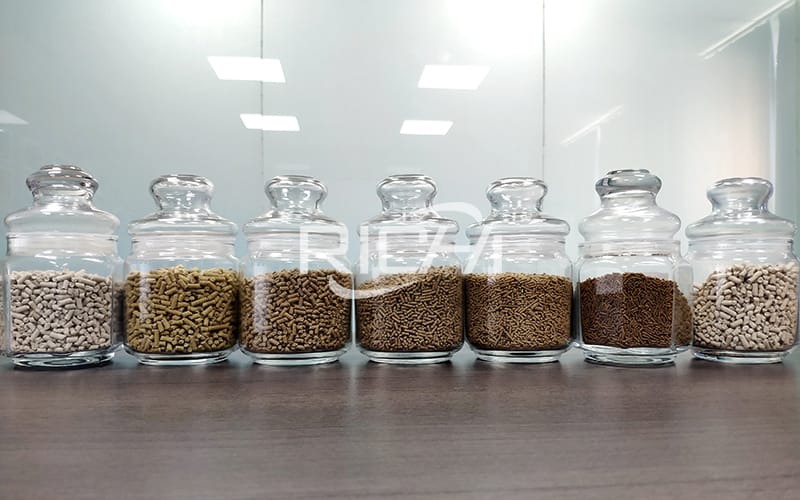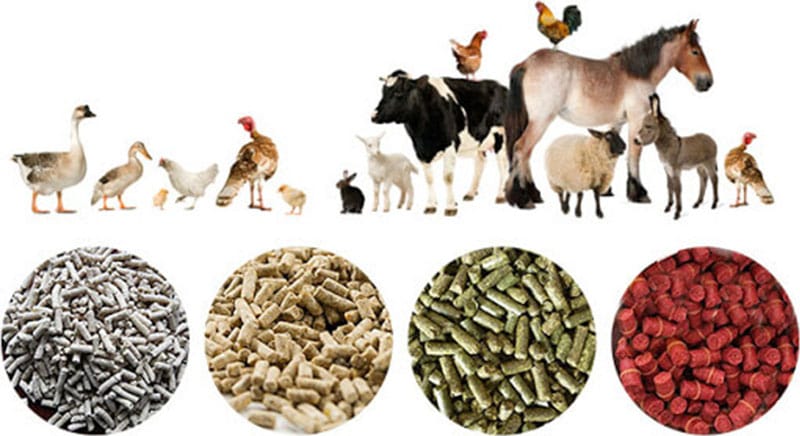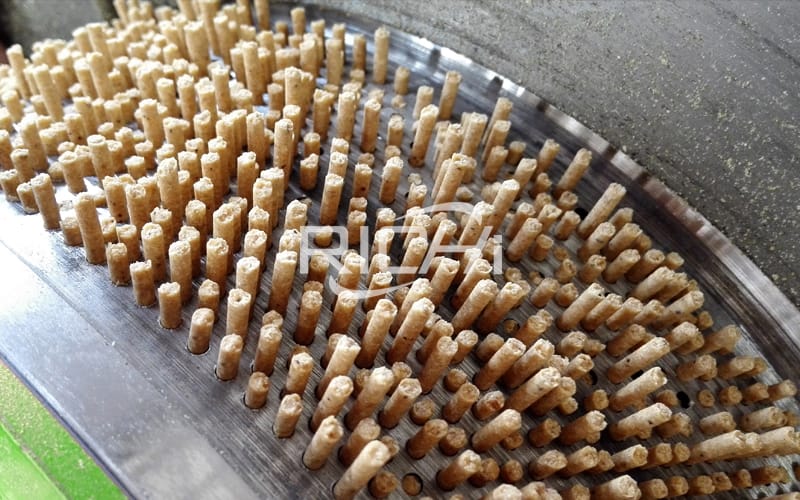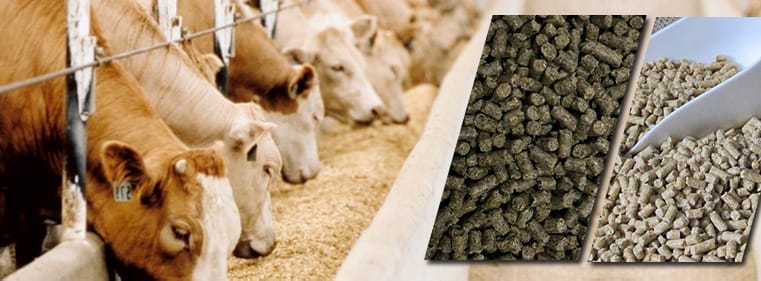Feed water retention and water control in the animal feed factory production process
Currently, the competition among animal feed production companies is becoming increasingly fierce. Feed production has entered a period of low profit. The animal feed plant production cost has become one of the important factors affecting the efficiency of animal feed factories. Factors such as production energy consumption, material loss in the animal feed production process, production efficiency, and mechanical wear directly affect production costs. If animal feed companies want to remain invincible in the competition, they must minimize production costs. In addition to the management factors and mechanical equipment factors in animal feed manufacturing process, feed moisture is the most important factor affecting production costs. Scientific use of moisture can reduce production energy consumption, mechanical wear and process loss without reducing feed quality, thereby Increasing production efficiency and reducing production costs, while maintaining normal feed water content, can improve the palatability of feed and improve animal production performance.

1. Water content in feed products and its impact on economic benefits
(1) Water content in feed products
In the autumn and winter seasons, due to the low temperature, most animal feed mill plants use newly marketed corn and other raw materials, which generally have high moisture content. After the corn-soybean meal type ration is pelletized in feed production, the moisture content is generally below 13%, which can basically meet the quality control requirements. However, with agricultural and sideline products such as rice bran meal and DDGS (with lower moisture content, about 9%-12%) The extensive use of) reduces the moisture of the finished product to within 12%. In summer and autumn, the moisture content of feed ingredients is generally about 11%-13%. In addition to the high temperature in summer, part of the moisture of feed ingredients is lost in the process of crushing and pelleting. This makes the moisture of finished feed products very low, generally around 9%-11%, which is low. The standards required by the country. Too low feed moisture will cause increased dust during feed processing, increased finished product loss rate, increased pelletizing energy consumption, unsatisfactory corn gelatinization, pelleting ring die wear, and decreased feed palatability, which will directly affect feed production factories' economic benefits.
(2) The impact of feed product moisture content on the economic benefits of animal feed manufacturers
The moisture content of the feed product not only affects the internal and external product quality of the feed, but also has a direct impact on the output rate and economic benefits of the product. A cattle poultry animal pellet feed making plant with an annual output of 30,000 tons can lose up to 750,000 yuan in economic benefits. Adjusting the animal poultry cattle feed production process parameters according to the production season and the changes in raw materials, especially adjusting the conditioning process parameters during pelleting, can significantly improve the economic benefits of the animal feed manufacturer and the quality of feed products.
(3) The effect of feed water retention on animal performance
By adding 0.5% and 1.5% moisture to the powder, the daily gain of pigs increased by 2% and 9% respectively compared with the control group, and the feed conversion efficiency was also improved. The reason is that after adding water, the gelatinization degree and granule durability of starch during the animal feed granulation process are improved. Adding 2.5% moisture does not improve the growth performance of pigs, because adding too much moisture before conditioning will reduce the ability of the material to absorb steam, thereby reducing the conditioning temperature, which is not conducive to starch gelatinization.

2. Methods and measures to increase feed moisture during animal feed processing technology
(1) Moisture control in feed crushing stage
By comparing the water content of the material before and after the crushing with different apertures of the crusher screens, after inspection and analysis, it is found that as the size of the material is reduced, the water loss increases significantly. Similarly, for materials with different gradient moisture content, the moisture content of the materials before and after smashing is compared. The inspection and analysis found that as the moisture content of the materials increases, the moisture loss of the powder after smashing increases, and the maximum moisture loss is close to 1%. As the moisture content of the material increases, the crushing efficiency is also significantly reduced, and the energy consumption is significantly increased. For animal feed hammer mill grinders equipped with negative pressure suction and a damper adjustment device, as the air volume increases, the moisture loss still tends to increase. After the corn is crushed, the moisture loss of mechanical transportation is 0.22%, and the loss of pneumatic transportation is 0.95%.
(2) Water control during animal feed mixing process
When the moisture content of the mixed powder is lower than 12.5%, consider spraying atomized water when the materials are mixed. However, there are many problems in this area that should be paid attention to. The spray water should not exceed 2% of the material during mixing, otherwise the moisture uniformity in the material is not good and the feed is prone to mildew. Furthermore, spraying atomized water directly into the material has poor water retention performance. Adding 2% water only has a water retention rate of 40%-50%. When spraying atomized water during the mixing process, consider the consistency of the mixing time and the water addition time; in order to ensure the uniform spraying, adjust the position of the nozzle and the size of the nozzle; pay attention to timely cleaning the inner wall of the horizontal feed mixer equipment ; Need to add anti-fungal agent.
To add moisture to materials, it is necessary to monitor the moisture of incoming raw materials, mixed powders and final products in real time. Only when the moisture of mixed powders and final products are lower than 13%, moisture addition can be considered. Strictly determine the moisture content of the purchased single raw material and enter it into the cost accounting sheet in time; conduct the first sample inspection of the processed feed, that is, the initial moisture content of the first batch of mixed powder (mixed powder in the mixer) of each shift (before steam treatment) ) To determine; calculate the theoretical value of the initial moisture content of the powder based on the moisture content of various raw materials in the ration (due to the crushing and transportation of the raw materials, the calculated value may be higher than the actual measured value), if the moisture value is less than 13%, it is mixed A proper amount of spray water is required. The amount of water added is manually set according to the test or calculation results. The target moisture should be set at 2% higher than the initial moisture, but the maximum moisture must not exceed 13%.

(3) Water control in the process of feed pelleting
The diversity of sources and varieties of raw materials used in feed processing has brought about the problems of differences in water distribution and variability of water content in intermediate products and final products of feed processing. Studies have shown that the moisture content of the semi-finished powder after mixing is generally between 9%-14%, and the moisture content of the molded material after quenching and tempering is between 15%-17%. The pellet feed produced at this time has better processing quality, uniform finish, low powdering rate, and lower energy consumption, and the moisture content of the final product can easily meet the standard requirements. Generally, the moisture content of pellets after processing should not be higher than 12.5%, and it can be no higher than 13.5% in the north. If pellet feeds are processed in summer, the optimum moisture content of finished pellets should not be higher than 12.5% due to the higher ambient temperature. Otherwise, it is easy to mold and deteriorate.
①Reduce the boiler steam pressure during animal pellet feed production process, and increase the steam water content of the steam
Usually the steam supply pressure of feed production boiler is 7-9kg/cm2, and the production pressure is 3-4kg/cm2. The higher the pressure, the lower the humidity; conversely, the lower the pressure, the higher the humidity, and the higher the steam water content. Therefore, as long as the production needs are met, the lower the pressure, the better. It is recommended that the boiler steam supply pressure be adjusted to 4-6kg/cm2 and the production pressure to be adjusted to 2-2.5kg/cm2.
②Increase the conditioning time of the material in the conditioner
Increase the residence time of the material in the conditioner to fully mix the material with steam, which is conducive to starch gelatinization, improves the digestion and absorption rate of livestock and poultry, and also enables the material to fully absorb the moisture in the steam, thereby increasing the moisture of the product. Increasing the conditioning time can be solved by reducing the speed of the conditioner or adjusting the blade of the conditioner.
③Close or adjust the trap in the steam supply pipeline
Usually, many traps are installed in the steam sub-drum and steam supply pipeline. The purpose is to remove the condensed water in the steam pipeline and prevent the steam from bringing too much moisture into the animal poultru livestock feed pelletizer machine. However, Due to the low moisture content of the raw materials in summer, the moisture content of the steam is also low, and it is difficult for the moisture content of the materials after conditioning to reach 16%. Therefore, adjusting or closing the trap will not cause blockage, but will help increase product moisture.
④Choose the appropriate specification of the ring die
The aperture and thickness of the ring die for the material making are not only the main factors affecting the production capacity of the ring die pellet mill for animal feed, but also the moisture content of the pellet feed product. A die with a small aperture, because of its small particle diameter, the cooling air volume of the pellet cooler easily penetrates the feed pellets, so the water taken away during cooling will be too low for the feed product. Conversely, the material ring die with a large aperture has a larger particle diameter, and the cold air is not easy to penetrate the particles, and the water taken away during cooling is less, and the water content of the feed product will increase. For the thick ring die, during the animal feed pelletizing process, the friction resistance is large, and the material is not easy to pass through the aperture. When extruding and granulating, the friction temperature is high and the water loss is large, and the water content of the feed pellets will be reduced, so it is recommended to choose When making a ring die, the hole diameter and thickness of the die should be suitable.
⑤When the feed pellets are cooled, the appropriate cooling air volume should be selected
The purpose of the cooling process is to reduce the temperature of the pellet feed so that it does not exceed the room temperature by 3-5℃; on the other hand, it can also take away the moisture in the feed so that the moisture content of the feed product meets the specified requirements. Before the moisture, set the cooling parameters of the corresponding finished product to avoid excessive moisture loss.

3. Methods and measures to increase the moisture content of feed ingredients or semi-finished products
Methods to increase the moisture content of feed ingredients include: directly adding moisture to the feed (adding liquid with high moisture content); using high moisture ingredients, such as corn with higher moisture content. Appropriately increasing the water content of feed ingredients or semi-finished products can improve product quality and reduce production costs.
(1) Problems in directly adding water to feed or using high-moisture ingredients
Adding water directly to the feed or using high-moisture raw materials can greatly increase the chance of feed mildew. During the feed mill line production process, it may cause blockage during pelleting and crushing, large feed moisture variation, and low feed water retention rate. problem.
There are 3 necessary conditions for mold growth: moisture (water activity Aw), temperature and oxygen. Feed moisture alone cannot accurately evaluate the influence of microorganisms on feed mold. At present, water activity has become an important indicator for evaluating feed mold and mycotoxin production. Feed water activity is not only related to feed water content, but also to environmental temperature and humidity.
The water in the feed is divided into free water and bound water. The amount of free water in the feed is determined by the vapor pressure on the product. If the feed is stored in a sealed place, the moisture in the feed will reach a balanced state due to the evaporation of free water soon. Therefore, the free water content can be determined by the vapor pressure (P) measured in the equilibrium state. The vapor pressure of pure water measured at the same place is called Po. Water activity refers to the equilibrium relative humidity, which can be expressed by the Aw value, which is equal to P/Po.
Whether mold spores and other microorganisms have a chance to grow is determined by the Aw value, not by the water content. What molds and other microorganisms can use is the free water of the material. Most of the way to add water to feed in summer is to spray water before conditioning, but this water can easily be used by microorganisms to make feed moldy. Under different water activity conditions, the microorganisms that are easy to grow are also different. When the Aw value is between 0.91 and 0.95, the bacteria are the easiest to grow; when the Aw value is 0.88, the yeast is the easiest to grow; when the Aw value is 0.80, the mold is the easiest to grow.
(2) Methods and measures to replenish feed ingredients or semi-finished products
The basic model of feed moisture control is to pay attention to the initial moisture of the mixer powder and determine the target temperature after steam treatment, and control the moisture of the finished product. When the initial moisture of the powder is less than 13%, some moisture can be added. The moisture of the finished product should not exceed 13%, otherwise there will be a risk of mold. Adding 0%, 0.5%, 1.5%, and 2.5% moisture to the powder of the mixer will affect the quality of the particles. The results show that the moisture content of the finished product is 11.02%, 11.33%, 12.01%, 12.32%, and 0.5%, 1.5% moisture in the finished product has 65% water retention rate, adding 2.5% water only has 50% water retention rate.
The main manifestations of feed mildew are local mildew in the package and mildew on the surface of the feed pellets, and overall mildew is rare. The fundamental reason is that the temperature difference has caused the migration and aggregation of moisture, which causes the moisture content of the surface of the particles and the sealing part of the package to rise, causing mold. In order to control the water activity of the feed, surfactants and water binding agents can be added to the sprayed water. Water binders and surfactants usually contain various organic acids such as propionic acid, propionic acid amine, formic acid, sorbic acid, lactic acid, and citric acid. Organic acid molecules such as formic acid, propionic acid and sorbic acid have a strong inhibitory effect on molds; the strong buffer system formed by propionic acid and ammonium propionate can reduce the corrosiveness of the equipment. Therefore, the presence of water binders and surfactants prevents water from moving to the surface of the feed pellets and combines free water, thereby reducing the loss of water, ensuring the uniform distribution of water inside and outside the feed pellets, and ensuring the moisture in the feed.
If you want to built one complete pellet production line in your country, pls send the inquiry to us. We will customized design according to your requirement.



